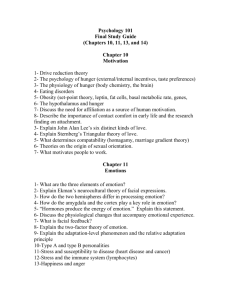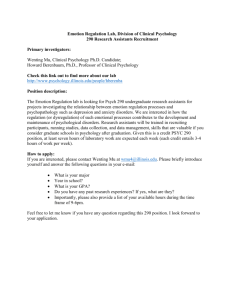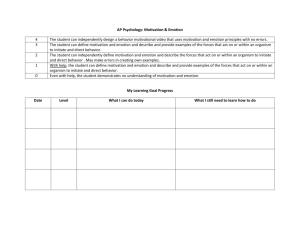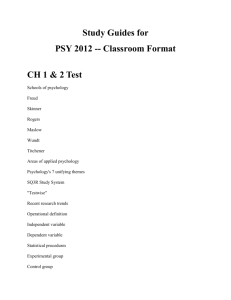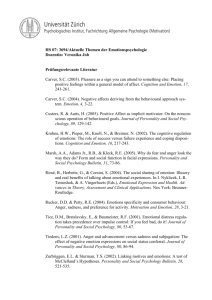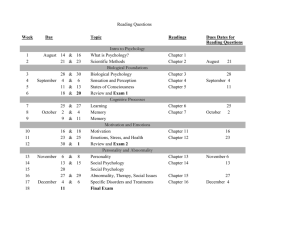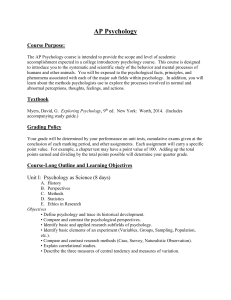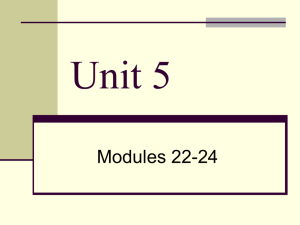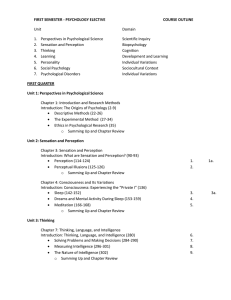Final Study Guide 1
advertisement
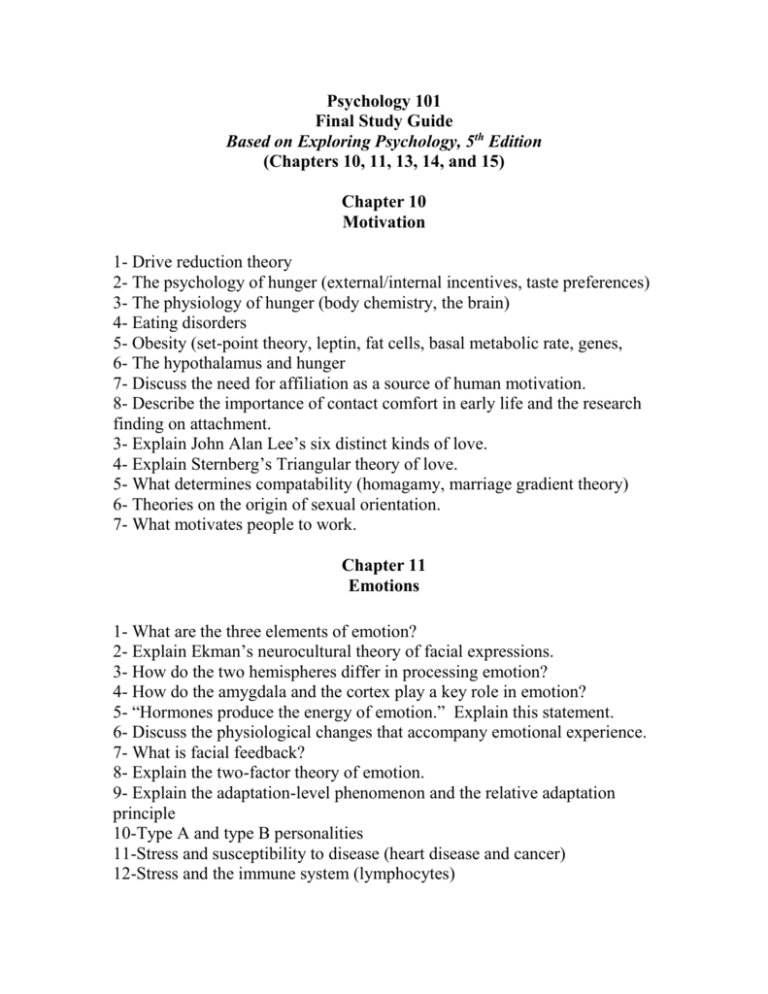
Psychology 101 Final Study Guide Based on Exploring Psychology, 5th Edition (Chapters 10, 11, 13, 14, and 15) Chapter 10 Motivation 1- Drive reduction theory 2- The psychology of hunger (external/internal incentives, taste preferences) 3- The physiology of hunger (body chemistry, the brain) 4- Eating disorders 5- Obesity (set-point theory, leptin, fat cells, basal metabolic rate, genes, 6- The hypothalamus and hunger 7- Discuss the need for affiliation as a source of human motivation. 8- Describe the importance of contact comfort in early life and the research finding on attachment. 3- Explain John Alan Lee’s six distinct kinds of love. 4- Explain Sternberg’s Triangular theory of love. 5- What determines compatability (homagamy, marriage gradient theory) 6- Theories on the origin of sexual orientation. 7- What motivates people to work. Chapter 11 Emotions 1- What are the three elements of emotion? 2- Explain Ekman’s neurocultural theory of facial expressions. 3- How do the two hemispheres differ in processing emotion? 4- How do the amygdala and the cortex play a key role in emotion? 5- “Hormones produce the energy of emotion.” Explain this statement. 6- Discuss the physiological changes that accompany emotional experience. 7- What is facial feedback? 8- Explain the two-factor theory of emotion. 9- Explain the adaptation-level phenomenon and the relative adaptation principle 10-Type A and type B personalities 11-Stress and susceptibility to disease (heart disease and cancer) 12-Stress and the immune system (lymphocytes) 13-Happiness and anger Chapter 13 Psychological Disorders 1- Discuss the function of the DSM. 2- Describe the causes and symptoms of Anxiety Disorders: generalized anxiety, panic attacks, phobias, obsessive-compulsive, posttraumatic stress disorder Mood Disorders: depression, mania, bipolar Personality Disorders: paranoid personality, narcissistic personality, antisocial personality Dissociative Disorders: amnesia, fugue, dissociative identity disorder Schizophrenia 3- Distinguish between the disease model of addiction and the learning model of addiction. Chapter 14 Therapy 1- Discus the use of antipsychotic drugs, antidepressants, minor tranquilizers, and Lithium. 2- What are the problems inherent in treating psychological disorders with drugs. 3- Explain the principles of the four major schools of psychotherapy: psychodynamic, behavioral, cognitive, humanistic, and therapy in social context. 4- When is therapy effective? 5- When is therapy harmful? 6- What are the alternatives to psychotherapy? 7- How does forgiveness affect your psychological health? 8- What is the difference between classical conditioning and operant conditioning? Chapter 15 Social Psychology 1-Attribution theory: situational and dispositional 2-Fundemental attribution error 3-Attitudes: the foot-in-the-door phenomenon, role playing 4-Cognitive dissonance theory 5-Conformity: mood linkage, chameleon effect 6-Reasons for conformity: normative social influence, informational social influence 7-Obedience: The Prison Study 8-Group Influence: a. Social facilitation b. Social loafing c. Deindividuation d. Group polarization e. Groupthink 9-Social and emotional roots of prejudice: a. Social inequalities b. Us and them c. Scapegoating 10-Cognitive roots of prejudice: a. Categorization b. Vivid cases c. The-just world phenomenon 11-The biology and psychology of aggression 12-Conflict: social traps, mirror image perception 13-Attraction: a. Proximity b. Familiarity c. Physical attractiveness d. Similarity 14-Altruism: a. Bystander effect b. Social exchange theory

